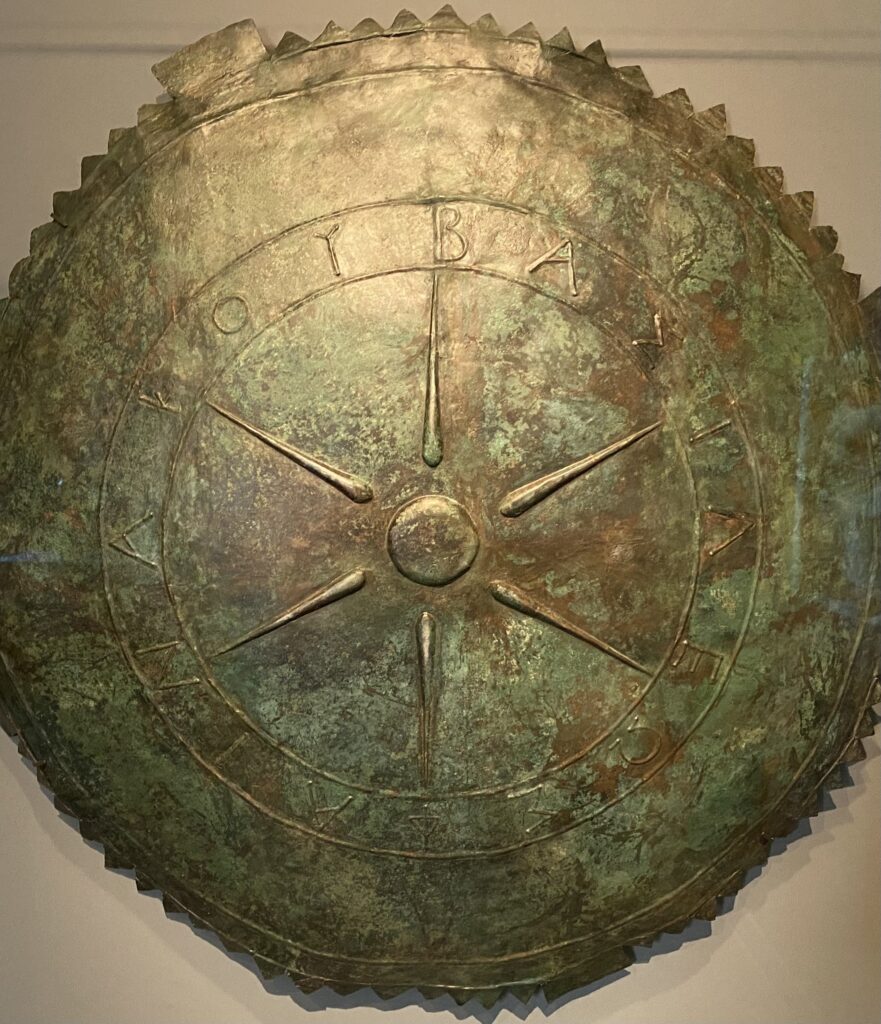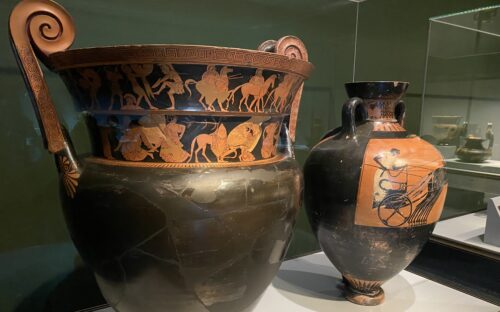
By David A. F. Sweet
LOS ANGELES — Unlike most museums, which sit in urban environments and are often overshadowed by taller buildings, the Getty Villa – perched above the pounding ocean waters of Los Angeles — stands apart.

These vases are believed to have been created 2,500 years ago. The one on the right features, a scene of a chariot race.
A soft right heading north off the Pacific Coast Highway (there is no access driving south) lands you at the base of a soon-to-be steep hill with trees and vegetation on either side. As you crawl up the cobblestone drive, you are entering a quiet Southern California paradise, far removed from ceaseless traffic below.
Given its hillside location, once you spend $20 to park at the Getty Villa (admission is free), there are still quite a few stairs to navigate to reach the museum. But as you continue to move higher, behold the houses balanced on the mountain tops or turn around to check out the view of the ocean, a glimmering sliver between the trees.

The 220-foot-long reflecting pool is surrounded by traditional Roman landscaping and covered walkways.
Those interested in paintings need not venture further; the Getty is dedicated to Greek and Roman antiquities. Clay and marble rule the rooms, not paintings, though the newer Getty Museum in Brentwood – which is far larger at more than 100,000 square feet — offers plenty of masterpieces and is only a half-hour drive away.
(According to the Getty website, “The J. Paul Getty Trust is the world’s largest cultural and philanthropic organization dedicated to the visual arts.”)

The marble gravestone from 100 B.C. features a woman believed to be of high status in society.
Coins of rulers of yore — including Alexander the Great – are made from gold, silver and bronze and date as far back as 650 B.C., when coinage was invented in what today is Turkey. The water jars are detailed with memorable scenes, such as Heracles trying to cut off the head of the hydra; every time that happened, two heads grew in its place. In another area, the same mythological figure warrants his own room; armed with a club and a lion skin, Heracles (more commonly known as Hercules) towers over any visitor. Gurgling fountains and long reflecting pools are graceful touches outside of the antiquities-bearing walls, and the open-air setting amid the colonnades prompts visitors to linger after visiting the rooms.
John Paul Getty, scion of the oil fortune, long owned the land that is drenched in California sunshine. In 1954, the J. Paul Getty Museum opened in a portion of his ranch house. In the 1970s, he built the present museum on 64 acres. It is modeled on the Villa dei Papiri in Herculaneum, buried during a volcanic eruption more than 2,000 years ago but partially excavated during various periods since the 18th century.

This shield bears the name in Greek of King Pharnakes, who ruled the kingdom of Pontos on the Black Sea.
Whether you’re an antiquities aficionado or simply desire a beautiful spot to take a stroll, the Getty Villa is a must-see experience. Few museums are so suited to their natural surroundings.
Unsung Gems columnist David A. F. Sweet can be reached at dafsweet@aol.com.







